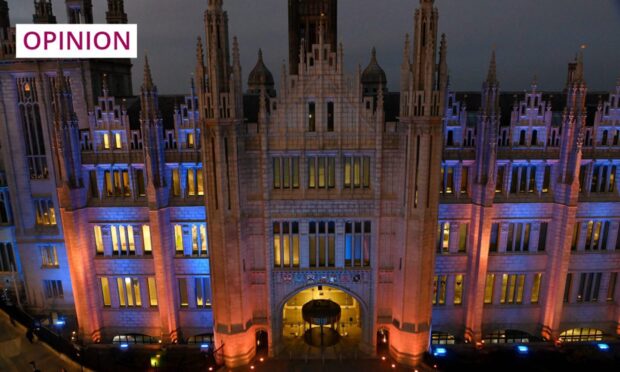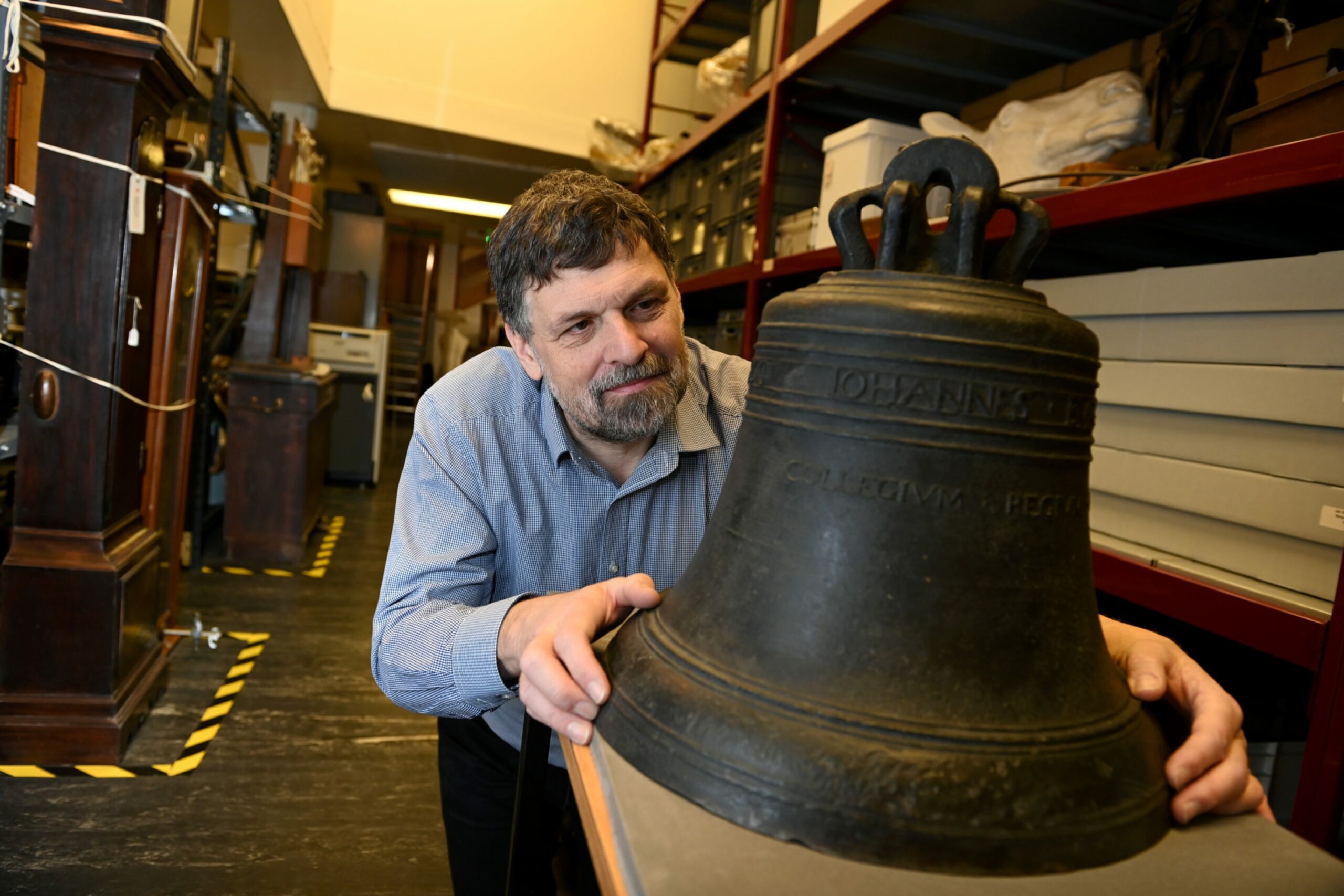Aberdeen’s Marischal Museum and Mitchell Hall stand silent. Their doors have been firmly shut to the public since 2008.
Within the dusty corridors, spider webs are woven around historical treasures: ancient Egyptian and Graeco-Roman antiquities, Scottish prehistoric artefacts, and a wide range of relics from cultures around the world.
The museum boasted over 4,000 Egyptian objects alone, including a real mummy and an ancient sarcophagus. Its numismatic collection ranked among the largest in Scotland.
The museum was officially opened in 1907. However, some sources trace its origins back to 1786. It is located, as its name indicates, in Marischal College, the iconic building that functions as Aberdeen City Council headquarters. As the second largest granite building in the world, it stands as a dramatic landmark in our city.
Unfortunately, as grand as it might appear, the interior of the building is not really accessible for tourists and curious visitors, at least not since the closure of the museum and Mitchell Hall. In my opinion, this is nothing less than a cultural tragedy.
For generations, Aberdonians, tourists, students, academics and children enjoyed the cultural heritage preserved in Marischal Museum. Sixteen years have passed since its closure, and it is time to bring the space back to life, for the good of Aberdeen and the north-east.
The museum was closed due to upkeeping constraints and infrastructural challenges. After years of neglect, the place is deteriorating.
Not really ‘open to all’ after 16 years of closure
In 2023, the University of Aberdeen’s head of museums and special collections, Neil Curtis, said: “The building is not now suitable as the venue for a modern museum, with no level access, and requiring major improvements to make it appropriate as a public venue. The displays, created in the early 1990s would also require replacement… There are no plans to reopen the museum”.
Nevertheless, some people associated with museums and special collections have criticised the university’s senior management for concentrating too much on STEM subjects and business-related ventures. They say this leaves little appetite for investment in the arts and humanities, which has led to the neglect of the museum.
It is, however, undeniable that, given the £15 million deficit the University of Aberdeen is currently facing, it simply cannot and will not invest in the museum. This situation inevitably poses a problem for two main reasons: the museum and Mitchell Hall will continue to deteriorate over time, and the existence of these places will fade from collective memory.
A university that is meant to be “open to all” cannot let a generation down by denying access to the priceless historical and cultural heritage contained within those walls. If something is not done, the museum and hall will only be enjoyed by spiders and moths.
Use the successful ‘Belmont model’
The obstacles appear daunting. The costs of ensuring accessibility and bringing the museum up to modern standards will undoubtedly be great – millions of pounds. Yet, where there is a will, there is a way.
I believe Marischal Museum and Mitchell Hall’s only hope lies in the mobilisation of the public. Many people share concerns about the future of these spaces.
I've had the pleasure of co-teaching with Neil Curtis, our head of museums & special collections, on LS55UU for the past two weeks. It has got me thinking what a shame it is that neither Marischal Museum nor Kings Museum (which was meant to replace it) remain open to the public. pic.twitter.com/QzQAgz6bcr
— Jonathan Ainslie (@JSAinslie) February 13, 2024
Not long ago, Dr Jonathan Ainslie, a lecturer in private law at Aberdeen, suggested on social media that a fundraising group based on the successful Save the Belmont Cinema campaign could be established to revive the museum. That campaign evolved into Belmont Community Cinema Ltd – a duly constituted charity now raising funds to refurbish and reopen the Belmont after its unfortunate closure.
It is important to be realistic; a full restoration will be costly and take time. However, there is no reason why a smaller-scale, strategically focused revival could not happen. Even a partial reopening would be a good place to start. As the old Chinese proverb says: “the journey of a thousand miles begins with one step”.
Marischal Museum and Mitchell Hall belong to the people
Since the University of Aberdeen has been unable to restore the museum over the past 16 years and will continue to neglect it, efforts need to be driven by the wider community in order to move forward, preferably led by an independent organisation. The precise legal structure would, of course, need to be considered, perhaps via the creation of a charitable trust.
It is time to acknowledge that Marischal Museum and Mitchell Hall belong not just to the university but to the people of Aberdeen and Scotland.
Our heritage cannot be allowed to rot into obscurity; it is time to let the light in
These public spaces should be a source of civic pride, a place for the diffusion of knowledge, and a magnet for tourism.
Our heritage cannot be allowed to rot into obscurity; it is time to let the light in. There is a dire need for collaboration.
This is why I’m calling upon the University of Aberdeen, AUSA, the students, staff, alumni, and the wider Aberdeen community to unite behind reviving the Marischal Museum and Mitchell Hall.
Tomás Pizarro-Escuti is a law student and a member of the University of Aberdeen Academic Senate


Conversation